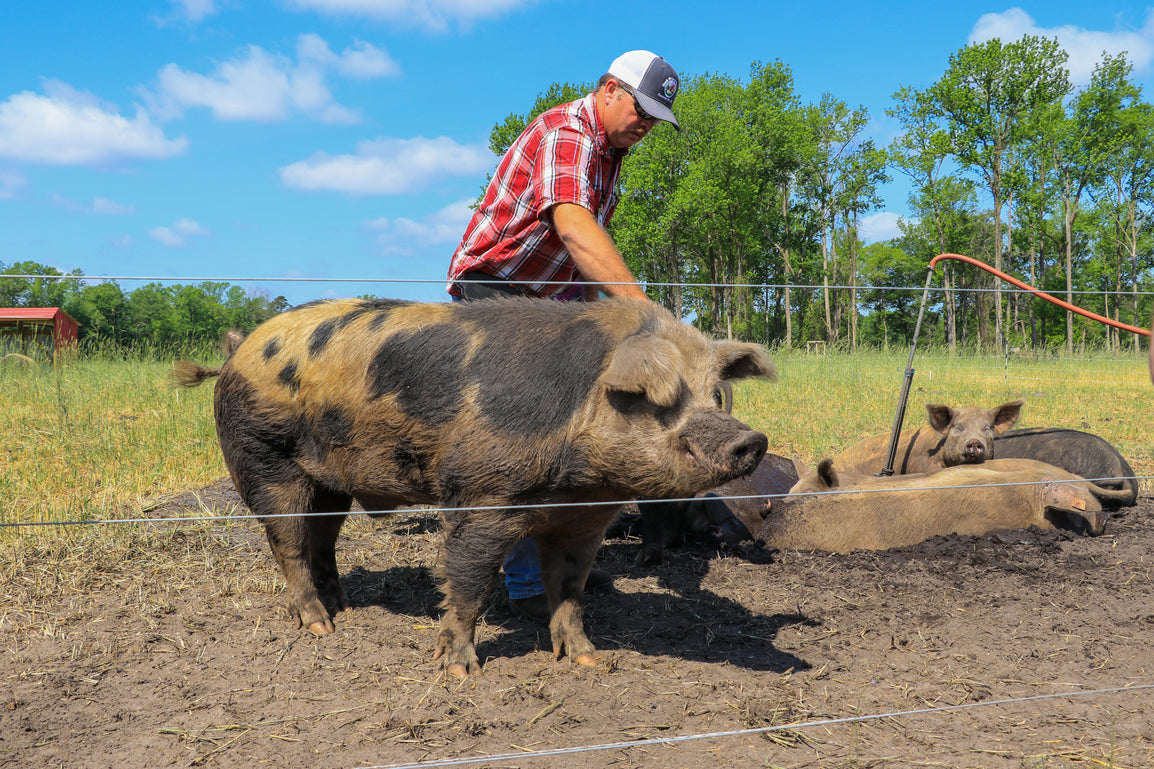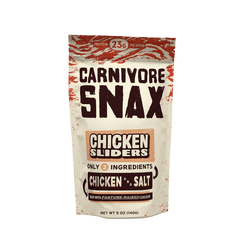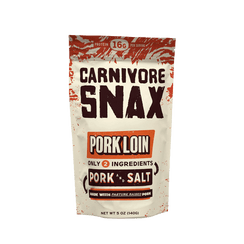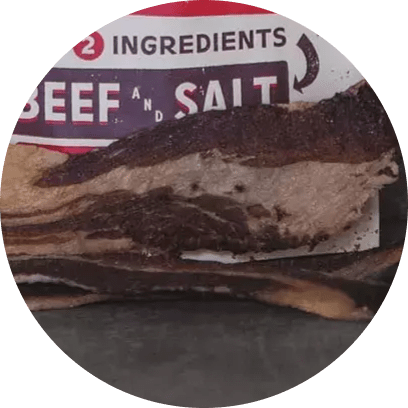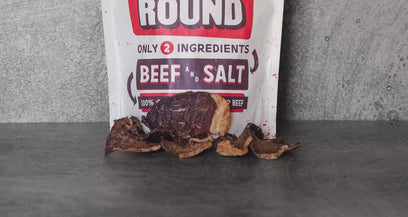THE CARNIVORE DIET BENEFITS




Regenerative farming - you've heard the term, seen it on the labels of your favorite products, or perhaps stumbled upon it in an article. It's the buzzword reverberating across farms, dinner tables, and global summits alike.
And rightly so, given the world's pressing need for sustainable food practices. But if you're a farmer considering the switch or a conscious consumer yearning to understand the impact of your food choices, you may be wondering: Is regenerative farming profitable?
Compared to traditional farming with its long history and established methods, the financial implications of regenerative farming might seem uncertain. But that's exactly what we're here to explore.
In this article, we'll examine the economic aspect of regenerative agriculture. We'll look at the challenges faced by conventional farmers, the potential benefits of switching to regenerative farming, and real-world examples of farms that have found success with this approach.
We'll also discuss how you, as a consumer, can help shape the future of sustainable farming. So, let's dive into the world of regenerative farming and its potential profitability.
A Brief Overview of Regenerative Agriculture
First things first - what is regenerative farming?
Our complete guide on this revolutionary approach to agriculture is worth reading for the full scoop. But below, we’ll cover the basics of how it works and why it matters. Then, we’ll take a look at just how profitable regenerative farming can be.
How it Works
Regenerative farming or agriculture is an approach to farming that goes beyond sustainability. It seeks to rebuild and rejuvenate the health of the soil, rather than just maintaining its current state. This is achieved through a variety of practices, such as:
- Minimizing soil disturbance: This reduces erosion and encourages the growth of beneficial organisms. All of the regenerative farming techniques seek to improve the health and prosperity of the soil.
- Planting cover crops: These crops shield the soil, reduce runoff, and enhance biodiversity.
- Employing crop rotation and diversity: Changing what's planted in different seasons prevents pests and diseases from becoming established. As a result, farmers don’t need to invest as heavily in pest-prevention methods. This adds a layer of health and safety, too, omitting pesticides.
- Composting: Rather than relying on expensive synthetic fertilizer, regenerative agriculture utilizes compost. This helps recycle organic matter safely while feeding crops all at once.
- Incorporating livestock: Animals can play a crucial role in a regenerative system. Their natural behaviors help fertilize the soil and promote its health through rotational grazing. This is better for the animals themselves, too. We have a full article on regenerative cattle farming if you’re interested in the extent to which animals keep a regenerative farm thriving.
You can learn more about how regenerative agriculture works in our detailed resource if you’re interested. For now, let’s talk about why regenerative agriculture is important.
Why it Matters
There are three reasons why we advocate for regenerative farming. It’s better for the end user, it’s better for the farmers, and most importantly, it’s better for the land. Here are some specific benefits of regenerative farming:
- Restores Our Lands: First and foremost, it's an approach to farming that seeks to mitigate the negative effects of agriculture on the environment. Regenerative farming can help sequester carbon, reduce greenhouse gas emissions, uses less water, and increase biodiversity, helping to restore our lands.
- Improves Soil Health: Healthy soil is vital for growing nutritious food. Regenerative farming practices promote a rich, fertile soil teeming with beneficial microbes and fungi, which can help produce healthier, more nutrient-dense crops.
- Food Supply Resilience: By enhancing the health and diversity of the ecosystem, regenerative farming can make farms more resilient to changes and less dependent on synthetic fertilizers and pesticides. As a result, the risk of famine is much lower because our food supply chain is stronger.
- Improved Farmer Health, Happiness, & Profitability: By reducing exposure to harmful synthetic chemicals, farmers can enjoy better health. The practices of regenerative farming can also lead to more satisfaction with their work as they see the positive impacts on the land they steward. And as you’ll discover shortly, this method of farming is very profitable, too!
All things considered, regenerative farming is important. But at the end of the day, farming is a business. The people who dedicate their lives to growing or raising our food need to make a living. So, is regenerative agriculture profitable? Let’s take a look…
Is Regenerative Farming Profitable?
Let’s make one thing clear - regenerative agriculture is very profitable. In fact, farmers who implement these techniques in their operation stand to earn higher profits than traditional farmers.
Why is regenerative so farming profitable, though? Simple - lower input costs coupled with the ability to charge more to the end user. There is less reliance on expensive commercial fertilizer or pesticides. Moreover, the consumer will happily pay more for a healthier, more natural food source.
This is backed up by a study conducted through the Ecdysis Foundation. While the transition to regenerative practices resulted in a 29% decrease in crop yields, the farms using regenerative practices were found to be 78% more profitable than their conventional counterparts!
That’s pretty incredible. So, let’s take a deeper look at the interworkings of regenerative farming economics.
Input Costs Are Lower
The profitability of any business depends not only on the revenue it generates but also on the costs it incurs. In conventional farming, the input costs can be quite high due to expenses like synthetic fertilizers, pesticides, and heavy machinery.
However, regenerative farming relies more on natural processes, leading to lower input costs. This reduction is primarily because the healthier soil fostered by regenerative practices requires fewer artificial inputs to maintain productivity.
This is best illustrated through an example, so imagine a farm that raises animals and grows a crop on the same plot of land.
The holistic approach of regenerative farming allows animals to graze as they would in their natural habitat - so the farmer doesn’t have to invest in land management equipment or labor. They also don’t have to buy expensive (and unnatural) commercial fertilizer for their herd!
All of this occurs while improving the soil, as rotational grazing gives the various sections of the farmer's land to heal and recover before they’re grazed again. Then, the farmer can use animal waste coupled with other organic inputs to compost, feeding their crop without expensive fertilizer.
In the end, a regenerative farming system lowers the need for outside inputs. The animals and the land work together in harmony to ensure all parties thrive. As a result, costs associated with running a regenerative farm as dramatically lower. While traditional farms have costs as high as 33% for external inputs, that figure is a mere 12% on regenerative farms.
That’s not all, either. The farmer earns more come harvest season…
The End Consumer is Willing to Pay More
On the revenue side, regenerative farming can also provide an advantage. As consumers become more environmentally conscious, they're increasingly willing to pay a premium for food that's not only healthy for them but also for the planet.
Regeneratively-grown produce often fetches higher prices in the market due to its perceived quality and sustainability benefits.
You can see this yourself at your local supermarket. Next time you’re picking up groceries, compare the cost of free-range eggs to their commercialized counterparts. You’ll notice quite a difference in price. And yet, consumers will happily pay the difference, as they recognize how much better it is for the chickens, the lands, and of course, themselves.
Tips for Transitioning to the More Profitable Regenerative Farming Style
If you’re a farmer of any scale reading along, you’re probably intrigued by the possibility of boosting your profits while creating a more meaningful, purposeful farming experience. And, you get to improve your working conditions along the way - what more could you ask for? The only question is, how do you get started?
- Start Slow: Switching to regenerative farming doesn't have to be an all-or-nothing approach. You can start by implementing regenerative practices on a small portion of your land and gradually expand as you see the benefits.
- Educate Yourself: There's a wealth of resources available on regenerative farming - from books to online courses and local workshops. Use these to gain a deeper understanding of the principles of regenerative agriculture and how to apply them to your farm.
- Network with Other Regenerative Farmers: Connecting with other farmers who have successfully made the transition can provide valuable insights and advice. They can share their experiences, challenges, and strategies for success.
- Soil Health is Key: Invest in building your soil health. Incorporate practices like cover cropping, reduced tillage, and composting to improve soil structure, fertility, and carbon sequestration ability. At first, your costs may be higher. But it’s like a snowball - once you get things rolling, profitability continues growing over time!
- Diversify Your Farm: Diversification is a key principle of regenerative farming. By growing a variety of crops and raising animals simultaneously, you can enhance soil health, manage pests naturally, and create additional income streams.
- Consider Direct-to-Consumer Sales: One way to maximize profitability is to sell directly to consumers who value and are willing to pay more for sustainably grown products. Consider setting up a farm stand, joining a farmers market, or starting a Community Supported Agriculture (CSA) program.
- Keep Track of Your Progress: Monitor your soil health, crop yields, and financials regularly. This will help you assess the effectiveness of your practices and make necessary adjustments.
You can learn more about how to do regenerative agriculture in our blog - whether you’re a farmer making the transition or a consumer looking to grow some of your own food using these sustainable tactics. But before we bring this conversation to a close, we want to discuss the role of consumer demand in regenerative agriculture profitability.
The Role of Consumer Demand in Regenerative Agictulure Profitability
Consumer demand plays a vital role in the profitability of regenerative agriculture. You, as a consumer, have significant power to shape the food industry with your purchasing decisions.
By choosing to buy products from regenerative farms, you are not only receiving higher quality and more nutritious food, but you're also supporting a system that works with nature, not against it.
Every time you opt for regeneratively grown products, you're voting with your wallet for a healthier planet, fairer wages for farmers, and a more resilient food system. This demand sends a strong message to the market, encouraging more farmers to transition to regenerative practices and making the entire system more economically viable.
Regenerative farming is more than a way of growing food; it's a way of life that respects the earth and its natural systems. And while the initial transition may bring challenges for farmers, the increased demand from conscious consumers can be the driving force that makes regenerative agriculture not just profitable, but the norm.
So, how can you participate in this change? First, read our guide on how to support regenerative farming. We offer a list of ways you can make a difference yourself.
But, the easiest and most enjoyable way is by choosing brands that align with your values, brands that prioritize ethical and regenerative practices. That's where Carnivore Snax comes in.
Our meat chips are sourced from the most elite, ethical regenerative farms in the country. By choosing Carnivore Snax, you're supporting regenerative agriculture and contributing to a healthier planet, all while enjoying a delicious, nutritious snack.
These are considered the best low-carb snacks available - and with so many delicious flavors to choose from, you’ll never get bored. You can choose from ribeye chips, steak chips, lamb chips, beef chips, brisket chips, chicken chips, and pork chips. No matter which variety you start with, prepare to be blown away by the melt-in-your-mouth goodness awaiting you in that first taste!
You can be the change you wish to see in the food supply chain. Start today, one bite at a time.
Wrapping Up Our Guide to the Profitability of Regenerative Farming
So, is regenerative farming profitable? Without a doubt. In fact, it’s dramatically more profitable than traditional farming techniques while producing lower yields. This can be attributed to two factors - the lower cost of maintaining these farms coupled with the increased price the consumer is willing to pay.
Now, if you want to learn more about this method of farming, you can continue reading our blog. We have in-depth resources on the history of regenerative agriculture, regenerative agriculture vs permaculture, or regenerative farming vs organic farming.
Otherwise, it’s time to put your money where your mouth is and get our Carnivore Chips today. Whether you’re looking for carnivore diet snacks or just want to follow a high protein diet, or are simply looking for a way to support regenerative farming yourself - you can’t go wrong with Carnivore Snax!









